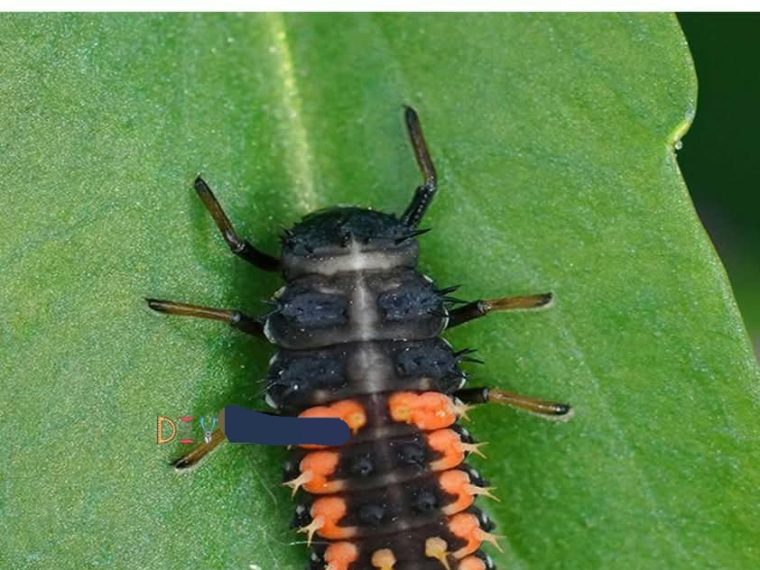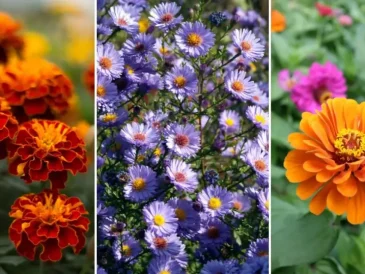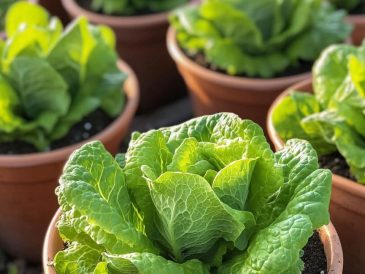Ladybird larvae, often mistaken for pests due to their unusual appearance, play a crucial role in maintaining the health of garden ecosystems. These small, alligator-like creatures are the juvenile stage of ladybirds, commonly known as ladybugs. Recognizing their importance is essential for gardeners who wish to cultivate a thriving and balanced garden environment. Ladybird larvae are natural predators of many garden pests, making them invaluable allies in pest management. By understanding their life cycle and ecological role, gardeners can better appreciate and support these beneficial insects.
Identifying Ladybird Larvae in Your Garden
Ladybird larvae are distinct in appearance, often resembling tiny alligators with elongated bodies and spiky protrusions. They are typically black or dark gray with bright orange or yellow markings, depending on the species. These larvae are usually found on the undersides of leaves or near aphid colonies, as they actively hunt for food. Unlike the more familiar adult ladybirds, the larvae do not have the characteristic round, spotted bodies. Instead, they have a segmented, elongated form that can be easily overlooked or misidentified as harmful. Observing these features can help gardeners correctly identify ladybird larvae and avoid unnecessary removal.
The Role of Ladybird Larvae in Garden Ecosystems
Ladybird larvae are integral to garden ecosystems due to their role as voracious predators of common pests. They primarily feed on aphids, but also consume other soft-bodied insects such as mites and scale insects. By controlling pest populations, ladybird larvae help maintain a natural balance, reducing the need for chemical pesticides. Their presence indicates a healthy, functioning ecosystem where natural pest control is at work. Furthermore, ladybird larvae contribute to the biodiversity of the garden, supporting a variety of other beneficial insects and wildlife.
Why Ladybird Larvae Are Beneficial to Your Garden
The presence of ladybird larvae in your garden is a positive sign, as they offer numerous benefits. They help control pest populations naturally, reducing the reliance on chemical interventions that can harm beneficial insects and the environment. By preying on aphids and other pests, they protect plants from damage and disease, promoting healthier growth. Additionally, ladybird larvae contribute to the overall biodiversity of the garden, supporting a more resilient and sustainable ecosystem. Encouraging their presence can lead to a more vibrant and productive garden.
1. Natural Pest Control: Reducing Aphid Populations
One of the most significant benefits of ladybird larvae is their ability to control aphid populations. Aphids are notorious for damaging plants by sucking sap and spreading diseases. Ladybird larvae consume large quantities of aphids during their development, effectively reducing their numbers and minimizing plant damage. This natural pest control method is environmentally friendly and sustainable, offering an alternative to chemical pesticides that can harm beneficial insects and pollinators.
2. Promoting Plant Health and Growth
By controlling aphid populations, ladybird larvae indirectly promote plant health and growth. Aphids can weaken plants by extracting vital nutrients, leading to stunted growth and increased susceptibility to diseases. With fewer aphids, plants can thrive, developing stronger stems, healthier leaves, and more abundant blooms. This improved plant health can enhance the overall aesthetic and productivity of the garden, making it more enjoyable and rewarding for gardeners.
3. Enhancing Biodiversity in Your Garden
Ladybird larvae contribute to the biodiversity of garden ecosystems by supporting a variety of other beneficial insects and wildlife. Their presence attracts predators such as birds and other insects, creating a balanced food web. This increased biodiversity can lead to a more resilient garden, better able to withstand environmental stresses and pest outbreaks. A diverse garden ecosystem is also more attractive and interesting, offering opportunities for observation and learning about the natural world.
4. Supporting the Life Cycle of Ladybirds
Supporting ladybird larvae in your garden is essential for completing the life cycle of ladybirds. After the larval stage, they pupate and eventually emerge as adult ladybirds, ready to continue the cycle of pest control. By providing a suitable environment for larvae to thrive, gardeners can ensure a steady population of adult ladybirds, which will continue to benefit the garden by preying on pests. This ongoing cycle helps maintain a healthy and balanced garden ecosystem.
Steps to Take When You Spot Ladybird Larvae
When you spot ladybird larvae in your garden, the best course of action is to leave them undisturbed. Observe their activity and ensure they have access to food sources such as aphid colonies. Avoid using chemical pesticides that could harm them and other beneficial insects. If possible, document their presence and share your findings with local gardening communities to raise awareness about their benefits. By taking these steps, you can support the natural pest control efforts of ladybird larvae and contribute to a healthier garden ecosystem.
Creating a Welcoming Environment for Ladybird Larvae
To encourage ladybird larvae in your garden, create a welcoming environment by planting a variety of flowering plants that attract aphids, their primary food source. Include plants with diverse structures, such as tall grasses and shrubs, to provide shelter and breeding sites. Avoid using broad-spectrum pesticides that can harm beneficial insects. Instead, focus on organic gardening practices that promote a balanced ecosystem. Providing a water source, such as a shallow dish with stones, can also support ladybird larvae and other beneficial insects.
Avoiding Harmful Practices: What Not to Do
To protect ladybird larvae, avoid using chemical pesticides and insecticides that can harm them and disrupt the natural balance of the garden. Refrain from removing or disturbing plants where larvae are present, as this can disrupt their development. Be cautious when introducing new plants or soil, as they may contain harmful chemicals or pests that could negatively impact ladybird larvae. By avoiding these harmful practices, you can support the health and success of ladybird larvae in your garden.
Encouraging Ladybird Larvae to Thrive
To encourage ladybird larvae to thrive, focus on creating a diverse and balanced garden ecosystem. Plant a variety of native flowers and shrubs that provide food and shelter for ladybirds and other beneficial insects. Practice companion planting to naturally deter pests and attract ladybirds. Regularly monitor your garden for signs of pests and beneficial insects, and adjust your gardening practices accordingly. By fostering a supportive environment, you can ensure the continued presence and success of ladybird larvae in your garden.
Conclusion: Embracing Ladybird Larvae as Garden Allies
Embracing ladybird larvae as garden allies is a rewarding and environmentally friendly approach to gardening. By recognizing their role in natural pest control and supporting their life cycle, gardeners can enjoy healthier plants, reduced pest populations, and a more diverse and resilient garden ecosystem. Ladybird larvae are a testament to the power of nature’s balance, offering a sustainable solution to common gardening challenges. By fostering their presence, gardeners can contribute to a healthier planet and a more beautiful, productive garden.




